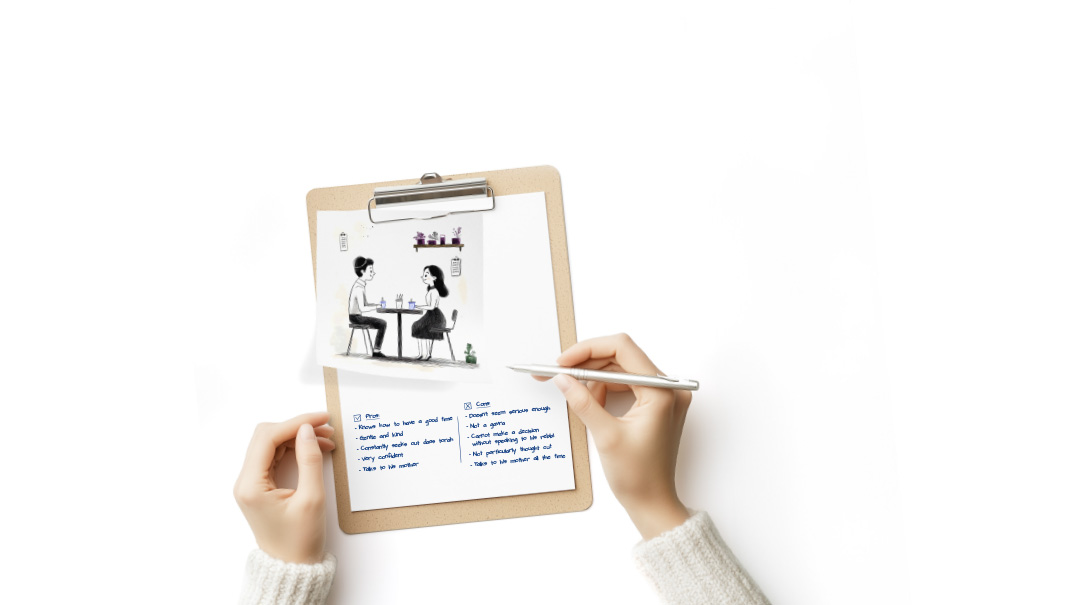It’s About Time
| December 13, 2022Five women took on a two-week challenge to overhaul their toughest time of day

I made a change to: The early morning
Name: Meredith
Age: 40s
Location: New Jersey
Job: Runs a playgroup
MY youngest is 12, so my children are pretty independent. But I still like to be there for them, make their lunches, and send them off to school with a smile.
My typical morning used to look something like this: I’d get up a few minutes before 7:45, when I needed to drive my son to his bus stop, and put on whatever clothing I could throw on easily. Then I’d help my girls get ready for school, and take them at about 8:15. I’d return home at 8:30, get dressed properly, and use the next 25 minutes to prepare for my playgroup kids to arrive.
Even though I was fitting it all in, I was rushed, barely having a moment to breathe, let alone eat a proper breakfast and daven. I was feeling behind before I even started my day.
There’s a book, The Miracle Morning, in which author Hal Elrod outlines a six-step morning routine, SAVERS, an acronym for Silence (a period of purposeful silence of at least five minutes), Affirmations (programming yourself to be confident), Visualizations (imagine what you want to achieve), Exercise, Reading (learning from the experts who have achieved what you want), and Scribing (documenting your insights). The idea is to wake up an hour before you need to start your day and do these six steps in a relaxed way. When I was first introduced to the SAVERS concept, it sounded amazing. Practically, I knew I’d have to tweak it to fit my lifestyle and personal goals.
I decided to aim to wake up before my family so I could read an excerpt from a book while drinking my morning Snapple. Then I’d daven, exercise, shower, and get on with the rest of my day.
I began in the summer, when there was less early morning pressure because my playgroup was on vacation, and I was able to ease into this new routine slowly. Instead of waking up a full hour before I needed to, I got up half an hour earlier. I used the time to read a book and daven, and it felt so calming to do this in a quiet house. One day I managed to get in some exercise and journaling, too. It was incredible to feel that accomplished so early on in my day.
Eventually I began waking up at 7:00. “Thank You, Hashem, for my seven a.m. wakeup,” I wrote in my journal one morning. I was really feeling the benefits of this small slice of time. One week, on a Friday, I made an entire simple Shabbos in those 45 minutes between 7:00 and 7:45. What a brachah that was!
I’ve been doing this for a few months now, and while I’ve had some off periods, I’m now back on track. I hope to do two to three of the SAVERS steps each day, and when I’m ready, to throw in the exercise routine as well.
The key to my success with this program was that I took a laid-back approach. In the past, I used to be hard on myself, saying things like, Why aren’t you doing more? Why can’t you stick to something for real? We often speak so negatively to ourselves. We wouldn’t speak that way to our good friends, so why do we speak that way to ourselves? After making this commitment, it was Yom Tov time, when I was totally out of whack, went to bed late, and definitely didn’t get up early. More recently I had a simchah to attend, and I hosted a sheva brachos. There were no routines the next morning. But I didn’t beat myself up for it, so I didn’t lose steam easily.
I’ve learned that you need to set goals, but also be realistic about your ability to achieve them, and celebrate the victories along the way instead of beating yourself up for your failures. I cut myself a lot of slack and gave myself a lot of positive reinforcement — and that method worked.
Oops! We could not locate your form.







